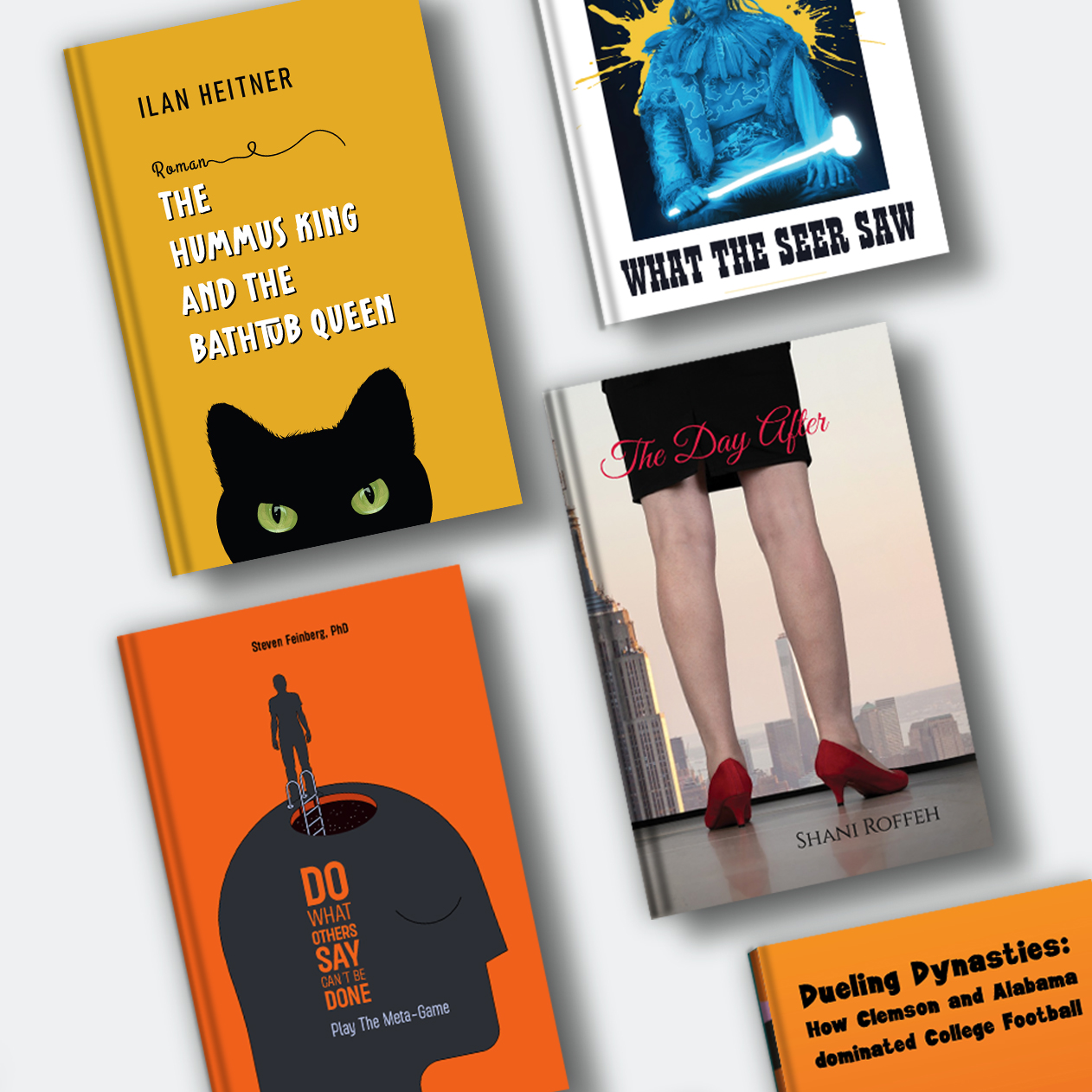Should You Design Your Own Book Cover? There are several steps between an author putting pen to paper and getting their first book published. Once the manuscript has been written and edited to perfection, a considerable amount of time must be put into putting the actual visuals of the product together. In traditional publishing houses, there is a department devoted to designing book covers for their author roster, because they know a good cover has an enormous impact on a book’s sales. In the self-publishing world, however, authors are left to hire their own designers, or even take a crack at creating one themselves. Though it can be tempting to use one of the many DIY websites like Canva and PicMonkey that offer free templates and stock photography, here are a few reasons to invest a part of your budget to hire a professional to design your book cover.
Books with self-made covers do not perform as well as professionally made ones.
Whether you’re looking at the eBook market or physical sales, indie or mainstream, one statistic dominates – and that is, the overwhelming majority of best-selling books are professionally designed, whether by the publishing company’s design team, or by an author’s own independently sourced designers. This correlation is not a coincidence. Self-made book covers are often easy to point out – the components of the design usually have several noticeable inconsistencies that take away from their impact. Terms like bleed margins, image dpi, typeface family and color story may be foreign to authors who don’t have a design background, but they are important branding elements that ensure your cover meets the industry standard; when they aren’t chosen intentionally and with an eye for design, it is noticeable, and has a negative impact on sales. Statistically speaking, sales favor covers designed by professionals.
Book covers are their own artwork.
The best compliment to your writing is a book cover that conveys the same level of artistry and excellence. Just like you wouldn’t wear sneakers and ripped jeans to a corporate job interview, you want your book’s appearance to reflect the professionalism of its contents. Far from an afterthought, a book cover is its own artistic statement. It would be a disservice to your writing to have a less-than presentation.
The allure of modern DIY design sites are the promise that the templates are curated by design professionals, without the added cost for one-on-one consultation. And while there are various, user-friendly websites with a plug-and-go accessibility, you will be sacrificing an important part of the design puzzle – innovation. A pre-made template may satisfy certain basic design guidelines and convey a vague similarity to other books in the genre, but without inspired artistry, that cover may be unoriginal and easily lost in the sea of others looking exactly like it.
(Above is an example of several books in the fantasy genre where authors used pre-made templates for their covers; while at first glance, these covers seem to convey the genre accurately, they are too generic to stand out. The fonts are strikingly similar, the colors and images are too vague to actually give the reader specific world-building clues. Just like a good book title or book description seeks to immerse the reader in the characters, setting and mood of the novel, a good book cover will communicate the narrative visually in a specific and cohesive way.)
Remember, you get what you pay for – the less you invest in your book cover design, the more it may cost you down the line from lack of impact. There are independent creative firms that specialize in book design, and can offer you packages or a la carte services; same goes with independent freelance professionals. Do the research – follow your favorite designers on Instagram, keep up to tabs with the best-selling books in your genre by checking data analytic websites like www.npd.com, go to local art shows, and be your own talent scout. Your wallet will eventually thank you when your book is able to stand out among the competition.
Professional book designers are market-savvy.
Publishing success is heavily dependent on the strength of a book’s marketing. The book cover is an important piece of the marketing puzzle, as it is the consumers’ first glimpse into the story’s world-building. A professional designer will have the training and the eye for what will be both acceptable to distributors, as well as what will entice the specific market your book aims toward. As was shown in the above example, It’s not enough for the book to be aesthetically pleasing to look at – it has to translate the essence of genre, mood and your unique writing style, and convey them visually. This is no small task, and the best designers usually have years of experience with a certain corner of the market and are up-to-date on the trends. You may have fallen in love with your favorite book at first glance, but would that book cover compete in today’s market? This is a reason why authors under big publishing companies often have their books re-designed and re-illustrated over the decades: consumer tastes and preferences for book cover design is a volatile, ever-changing aspect of the industry.
Should You Design Your Own Book Cover? Your time and energy are better utilized in other aspects of the publishing journey.
Imagine putting hours into creating your book cover from scratch. After many drafts, you finally settle on a design you think will be suitable. As you are uploading your hard work to the publishing platform, the manufacturer rejects your design – it does not follow the guidelines for image quality, size and bleed margins. You spend hours scouring online forums and help centers, researching how to fix your design to meet those guidelines – which either mean more hours of work, or a need to start all over again. Book design and branding involve a lot of technical and creative skills. If you’re outsourcing to someone trained and experienced to handle design, it will be one less thing on your enormous docket of responsibilities as an author. Attempting your own design may leave you frustrated and disappointed with your own creations, whereas hiring a professional ensures that someone will deliver high-quality designs in an efficient time frame. Instead of putting the responsibility of designing a book cover entirely onto yourself, presenting your creative vision to a design professional will help you get the best of both worlds: you will be able to have some creative direction, while having the perk of someone’s design and marketing expertise to ensure your idea is cohesively and effectively implemented. Consider it an investment – better design will stand the test of time, so you won’t have to spend more time and money re-issuing another book cover design later on.
The best part about self-publishing is the empowerment of having creative control; just don’t be afraid to delegate certain tasks to someone more qualified. You will find that a pro will be able to produce and enhance your ideas without sacrificing your creative vision.









